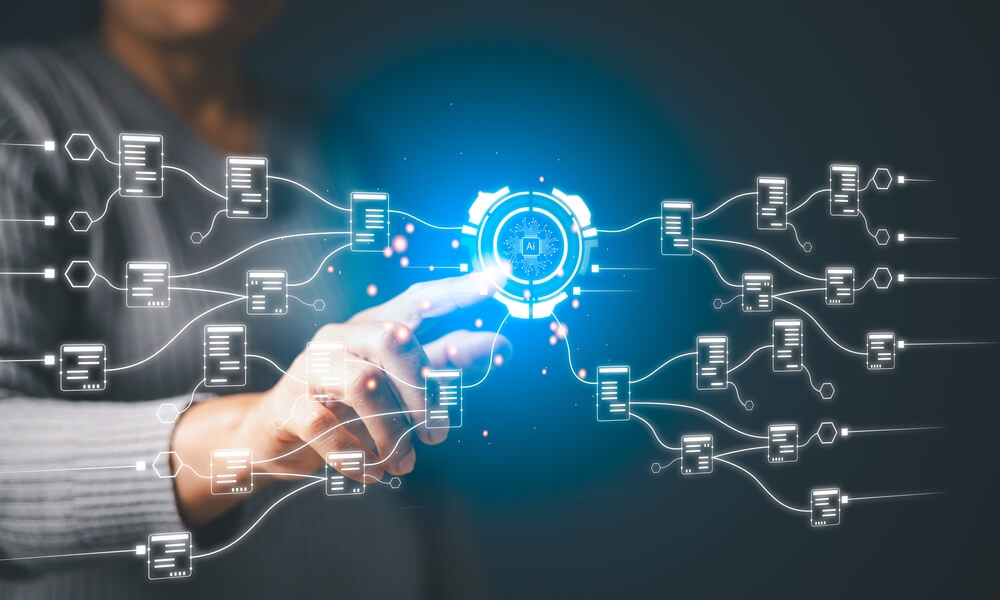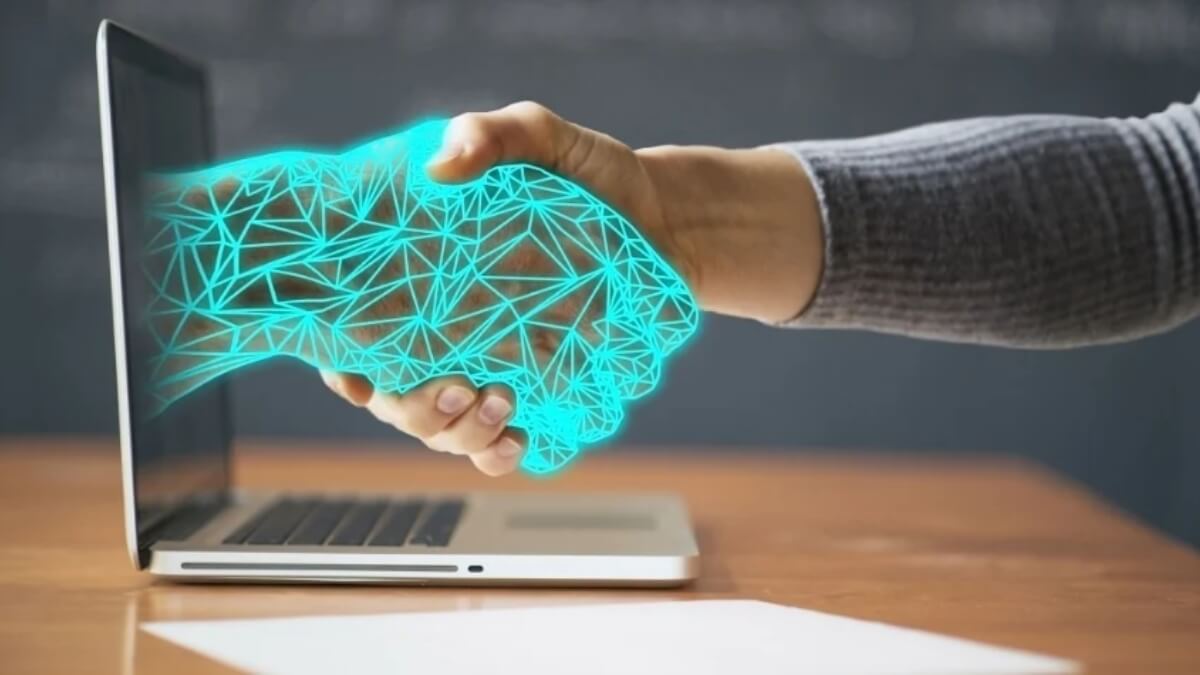The Role of Emerging Technologies in Driving Business Growth and Efficiency

In today’s rapidly evolving world, businesses are increasingly turning to emerging technologies to drive growth, streamline operations, and gain a competitive edge. From artificial intelligence (AI) and machine learning (ML) to blockchain, cloud computing, and the Internet of Things (IoT), the landscape of technological innovation is vast and ever-expanding. These technologies are transforming how companies operate, innovate, and interact with their customers, making it essential for business leaders to understand their potential. This article delves into the various emerging technologies reshaping the business world, their role in driving growth and efficiency, and practical examples of their application.
1. Artificial Intelligence (AI) and Machine Learning (ML)
AI and ML are at the forefront of technological advancements that are revolutionizing businesses across industries. These technologies enable machines to mimic human intelligence, analyze vast amounts of data, and make decisions with minimal human intervention.
1.1 AI in Business Operations
AI is being utilized to automate routine tasks, allowing companies to improve efficiency and reduce costs. For instance, customer service departments are leveraging AI-powered chatbots to handle a large portion of inquiries, freeing human agents to focus on more complex issues. Furthermore, AI-driven analytics tools help businesses identify trends, forecast demand, and optimize inventory management, reducing waste and improving supply chain operations.
1.2 Machine Learning for Personalization
ML, a subset of AI, is instrumental in creating personalized experiences for customers. E-commerce platforms, for example, use ML algorithms to recommend products based on a customer’s browsing history and preferences. This level of personalization boosts customer satisfaction and increases sales by delivering tailored experiences.
1.3 Predictive Analytics and Decision-Making
AI and ML are also driving data-driven decision-making through predictive analytics. By analyzing historical data, these technologies can predict future trends, customer behavior, and potential risks. Companies like Netflix and Amazon rely on predictive models to offer personalized content recommendations and optimize pricing strategies. As a result, businesses can stay ahead of the competition by anticipating market shifts and adjusting strategies accordingly.
2. Blockchain Technology
Blockchain, often associated with cryptocurrencies like Bitcoin, is much more than just a digital currency ledger. It is a decentralized and transparent digital ledger that allows secure and tamper-proof record-keeping. Blockchain’s potential for driving business efficiency lies in its ability to provide a trustworthy platform for transactions and data sharing.
2.1 Blockchain for Supply Chain Management
In supply chain management, blockchain is transforming how companies track goods and verify their authenticity. It provides end-to-end visibility into product journeys, from raw materials to finished goods. This transparency helps reduce fraud, counterfeiting, and inefficiencies, as all parties involved in the supply chain can access and verify the same data.
For example, Walmart uses blockchain technology to trace the origin of food products, ensuring safety and reducing the time it takes to identify contamination sources. This application of blockchain not only improves supply chain transparency but also enhances trust between businesses and consumers.
2.2 Blockchain in Finance and Contracts
Blockchain is also revolutionizing the financial sector by enabling faster, more secure transactions and reducing reliance on intermediaries like banks. Smart contracts, which are self-executing contracts with the terms of the agreement directly written into code, are another groundbreaking application of blockchain. These contracts automatically enforce the rules and penalties defined within them, reducing the need for third-party arbitration and cutting down on processing times.
3. Cloud Computing
Cloud computing has become a fundamental component of modern business operations. It allows companies to store and access data and applications over the internet rather than relying on local servers or physical hardware.
3.1 Scalability and Flexibility
One of the most significant advantages of cloud computing is its scalability. Businesses can scale their operations up or down based on demand without needing to invest in additional physical infrastructure. This flexibility is particularly beneficial for startups and small businesses, allowing them to compete with larger enterprises by accessing advanced tools and resources without the need for significant upfront investments.
3.2 Collaboration and Remote Work
Cloud computing also facilitates collaboration by enabling teams to access and share files from anywhere in the world. This is crucial in today’s increasingly remote work environment, where teams are spread across different locations. Platforms like Google Workspace and Microsoft 365 allow employees to collaborate in real time, improving productivity and reducing delays caused by geographical boundaries.
3.3 Disaster Recovery and Data Security
Cloud providers offer robust disaster recovery solutions that ensure business continuity in the event of system failures, data breaches, or natural disasters. With data stored securely in the cloud, companies can quickly recover critical information and minimize downtime. Additionally, cloud providers invest heavily in cybersecurity measures, protecting sensitive business data from unauthorized access and cyberattacks.
4. Internet of Things (IoT)
The Internet of Things (IoT) refers to the network of interconnected devices that communicate and share data with each other. IoT technology is transforming industries by providing real-time insights and automating processes that were previously manual and time-consuming.
4.1 IoT in Manufacturing and Logistics
In manufacturing, IoT devices are being used to monitor equipment performance and predict maintenance needs before a breakdown occurs. This proactive approach reduces downtime, increases productivity, and extends the lifespan of machinery. IoT is also optimizing logistics and supply chain management by providing real-time tracking of shipments, improving inventory management, and enhancing route optimization for delivery vehicles.
4.2 IoT for Smart Cities and Sustainability
IoT technology is playing a crucial role in the development of smart cities by improving infrastructure efficiency, reducing energy consumption, and enhancing the quality of life for residents. Smart grids, for instance, allow for more efficient distribution of electricity, while smart waste management systems optimize garbage collection routes to reduce fuel consumption.
4.3 Enhancing Customer Experiences with IoT
In retail, IoT devices are transforming customer experiences through innovations such as smart shelves, which monitor product availability and send automatic alerts when restocking is needed. IoT-powered checkout systems are also reducing wait times, allowing for smoother transactions and enhancing customer satisfaction.
5. 5G Technology
5G, the fifth generation of wireless technology, promises faster speeds, lower latency, and the ability to connect more devices simultaneously. This technology is set to revolutionize industries by enabling real-time data transmission, enhancing connectivity, and powering other emerging technologies like IoT and AI.
5.1 Enhancing Connectivity and Communication
With 5G, businesses can achieve faster and more reliable communication, both internally and with customers. Remote teams can collaborate more effectively through high-quality video conferencing, and businesses can deploy more connected devices in real time without network congestion. This enhanced connectivity will play a critical role in supporting the growing demand for IoT devices and smart systems.
5.2 Enabling New Business Models
5G is also paving the way for new business models and innovations. For example, autonomous vehicles require a high-speed, low-latency network to function safely and effectively. 5G enables these vehicles to communicate with each other and with infrastructure in real time, making the future of autonomous transportation a reality.
6. Robotic Process Automation (RPA)
Robotic Process Automation (RPA) uses software robots, or “bots,” to automate repetitive and rule-based tasks that were traditionally performed by humans. RPA is particularly effective in industries like finance, human resources, and customer service, where tasks such as data entry, payroll processing, and compliance reporting can be time-consuming and prone to error.
6.1 Efficiency and Cost Reduction
RPA significantly reduces the time required to complete repetitive tasks, freeing up employees to focus on more strategic activities. In doing so, businesses can reduce labor costs, minimize errors, and improve overall efficiency. For example, financial institutions are using RPA to automate fraud detection and loan processing, resulting in faster decision-making and improved customer service.
6.2 Scalability and Adaptability
One of the key advantages of RPA is its scalability. Once programmed, bots can work around the clock without fatigue, enabling businesses to scale their operations quickly without hiring additional staff. RPA systems are also adaptable and can be integrated with existing software platforms, making them a cost-effective solution for businesses looking to improve efficiency.
7. Augmented Reality (AR) and Virtual Reality (VR)
AR and VR are immersive technologies that are changing how businesses engage with customers and train employees. AR overlays digital information onto the real world, while VR creates entirely virtual environments.
7.1 Enhancing Customer Engagement
In retail, AR is being used to enhance customer experiences by allowing shoppers to visualize how products will look in their homes before making a purchase. For example, IKEA’s AR app enables users to place virtual furniture in their living spaces to see how it fits and looks in real life. This immersive experience helps customers make more informed decisions and reduces the likelihood of returns.
7.2 VR for Training and Development
VR is proving to be a valuable tool for employee training and development. In industries such as healthcare, aviation, and manufacturing, VR simulations provide a safe and controlled environment for employees to practice complex procedures without the risk of real-world consequences. This hands-on training approach enhances skill development, reduces training costs, and improves employee performance.
Conclusion
Emerging technologies are playing an instrumental role in driving business growth and efficiency. From AI and ML to blockchain, cloud computing, IoT, 5G, RPA, and immersive technologies like AR and VR, these innovations are reshaping the way businesses operate, compete, and interact with their customers. By embracing these technologies, businesses can streamline their operations, improve decision-making, reduce costs, and create personalized experiences that drive customer loyalty and satisfaction. As these technologies continue to evolve, their impact on business growth and efficiency will only increase, making it essential for companies to stay ahead of the curve and integrate them into their long-term strategies.


